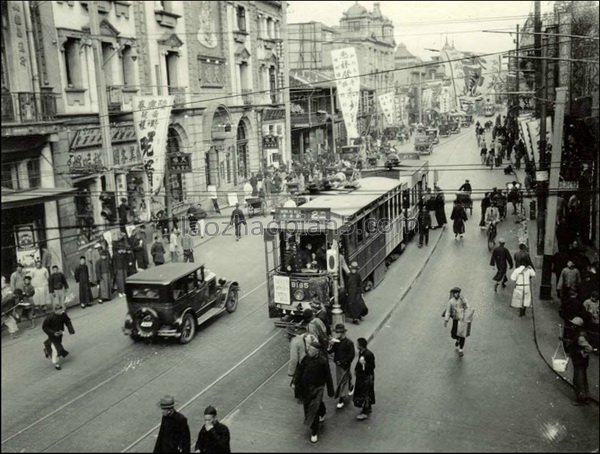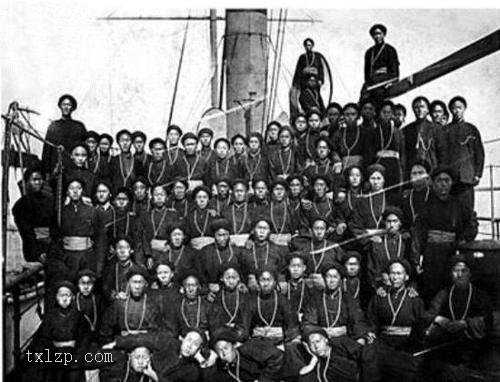Period:Yuan dynasty Production date:1280-1368 (circa)
Materials:porcelain
Technique:glazed
Subjects:buddha
Dimensions:Height: 30.50 centimetres Length: 21 centimetres Depth: 13 centimetres
Description:
This serene porcelain figure represents the Amitābha Buddha, eyes cast down, seated in the lotus position with his legs crossed and the soles of his feet upturned. His right arm hangs down, his right hand rests on his right knee and the left hand is turned palm upward on his lap. This meditative Buddha wears a monastic robe which is draped so as to leave his torso bare. His face is full rounded with a raised dot or ūrṇā in the centre of the forehead and he has elongated ear lobes, a sign of wisdom. His distinctive headdress is made up of small snail-like coiled bosses and topped with a spherical knob called an uṣṇīṣa. The figure has a flat unglazed base, pierced with two holes possibly for fitting on to a pedestal or ornamental stand. It is covered with a glossy qingbai (blue-white) glaze. Various firing cracks resulting from the thickness of the porcelain are visible, as are brown flecks in the glaze, evidence of iron impurities.
IMG
![图片[1]-figure BM-1985-0717.1-China Archive](https://chinaarchive.net/Yuan dynasty/Ceramics/mid_00184725_001.jpg)
Comments:Harrison-Hall 2001:Small devotional images were first made in porcelain at Jingdezhen in the Song dynasty (960-1280); an example is the figure of Avalokitesvara unearthed from a Song dynasty well in Changzhou, Jiangsu, in 1978. Small Song dynasty images of this type are often represented within a rocky grotto. The Bodhisattva Guanyin is the most common subject for sculpture with a qingbai glaze. Guanyin in India is worshipped as the male god Avalokiteśvara, but in China the deity gradually evolves into a compassionate female goddess who hears the cries of the world.During the Yuan era larger porcelain images of both Buddhist and Daoist gods and goddesses were made at Jingdezhen. A damaged porcelain figure of a Daoist god, covered with a qingbai glaze, was recently excavated from Yuan remains at Luomaqiao, Jingdezhen. Dated qingbai glazed porcelain figures of Buddhist deities survive from the Yuan era, including an image of the Bodhisattva Guanyin in the Nelson-Atkins Museum of Art, Kansas. This figure is dated with an ink inscription on the base reading second or third year of the Da De reign (ad 1298-9). Several other Yuan qingbai images of Bodhisattvas are in well-known public collections: for example, in the Victoria and Albert Museum, London; the Reitberg Museum, Zurich; the Field Museum, Chicago; the Staatliche Porzellansammlung, Dresden; the Metropolitan Museum of Art, New York, and the Musee Guimet, Paris. In the Yuan period images of deities were also made at the Longquan kilns in Zhejiang province, combining biscuit decoration with thick bean coloured green glaze (see BM 1929.0114.1).By contrast, however, porcelain images of the Buddha with a qingbai glaze are much rarer than figures of Bodhisattvas. Apart from the present British Museum example, there is another seated image of the Buddha in the Royal Ontario Museum, Toronto. At least two other qingbai Buddhas, both exhibiting slightly different ritual hand gestures called mudra, are known from private collections. Ultimately the form of this Buddha derives from Sino-Tibetan sculpture in more precious media, such as bronze. Related Yuan figures are also known in wood, including a lacquered wood figure of the Maitreya Buddha in the British Museum.
Materials:porcelain
Technique:glazed
Subjects:buddha
Dimensions:Height: 30.50 centimetres Length: 21 centimetres Depth: 13 centimetres
Description:
This serene porcelain figure represents the Amitābha Buddha, eyes cast down, seated in the lotus position with his legs crossed and the soles of his feet upturned. His right arm hangs down, his right hand rests on his right knee and the left hand is turned palm upward on his lap. This meditative Buddha wears a monastic robe which is draped so as to leave his torso bare. His face is full rounded with a raised dot or ūrṇā in the centre of the forehead and he has elongated ear lobes, a sign of wisdom. His distinctive headdress is made up of small snail-like coiled bosses and topped with a spherical knob called an uṣṇīṣa. The figure has a flat unglazed base, pierced with two holes possibly for fitting on to a pedestal or ornamental stand. It is covered with a glossy qingbai (blue-white) glaze. Various firing cracks resulting from the thickness of the porcelain are visible, as are brown flecks in the glaze, evidence of iron impurities.
IMG
![图片[1]-figure BM-1985-0717.1-China Archive](https://chinaarchive.net/Yuan dynasty/Ceramics/mid_00184725_001.jpg)
Comments:Harrison-Hall 2001:Small devotional images were first made in porcelain at Jingdezhen in the Song dynasty (960-1280); an example is the figure of Avalokitesvara unearthed from a Song dynasty well in Changzhou, Jiangsu, in 1978. Small Song dynasty images of this type are often represented within a rocky grotto. The Bodhisattva Guanyin is the most common subject for sculpture with a qingbai glaze. Guanyin in India is worshipped as the male god Avalokiteśvara, but in China the deity gradually evolves into a compassionate female goddess who hears the cries of the world.During the Yuan era larger porcelain images of both Buddhist and Daoist gods and goddesses were made at Jingdezhen. A damaged porcelain figure of a Daoist god, covered with a qingbai glaze, was recently excavated from Yuan remains at Luomaqiao, Jingdezhen. Dated qingbai glazed porcelain figures of Buddhist deities survive from the Yuan era, including an image of the Bodhisattva Guanyin in the Nelson-Atkins Museum of Art, Kansas. This figure is dated with an ink inscription on the base reading second or third year of the Da De reign (ad 1298-9). Several other Yuan qingbai images of Bodhisattvas are in well-known public collections: for example, in the Victoria and Albert Museum, London; the Reitberg Museum, Zurich; the Field Museum, Chicago; the Staatliche Porzellansammlung, Dresden; the Metropolitan Museum of Art, New York, and the Musee Guimet, Paris. In the Yuan period images of deities were also made at the Longquan kilns in Zhejiang province, combining biscuit decoration with thick bean coloured green glaze (see BM 1929.0114.1).By contrast, however, porcelain images of the Buddha with a qingbai glaze are much rarer than figures of Bodhisattvas. Apart from the present British Museum example, there is another seated image of the Buddha in the Royal Ontario Museum, Toronto. At least two other qingbai Buddhas, both exhibiting slightly different ritual hand gestures called mudra, are known from private collections. Ultimately the form of this Buddha derives from Sino-Tibetan sculpture in more precious media, such as bronze. Related Yuan figures are also known in wood, including a lacquered wood figure of the Maitreya Buddha in the British Museum.
© Copyright
The copyright of the article belongs to the author, please keep the original link for reprinting.
THE END



![[Qing Dynasty] British female painter—Elizabeth Keith, using woodblock prints to record China from the late Qing Dynasty to the early Republic of China—1915-China Archive](https://chinaarchive.net/wp-content/uploads/2022/11/image-191x300.png)

